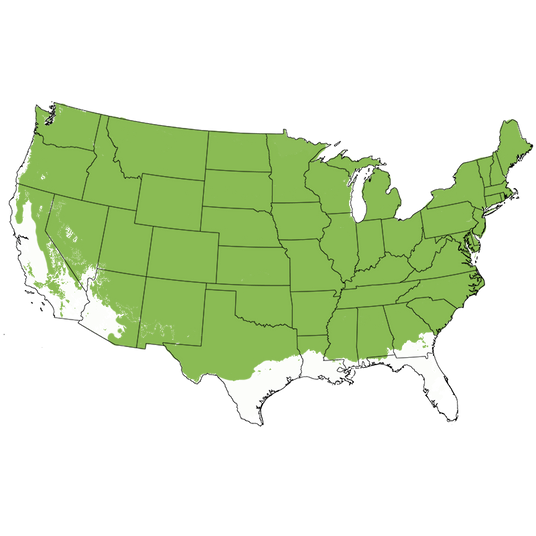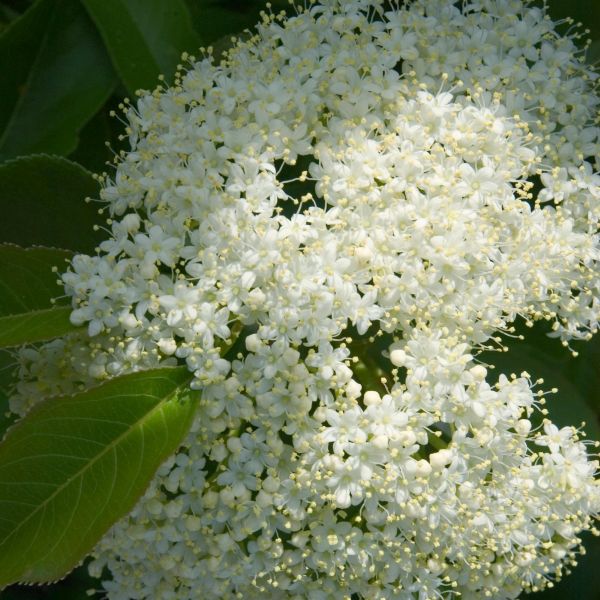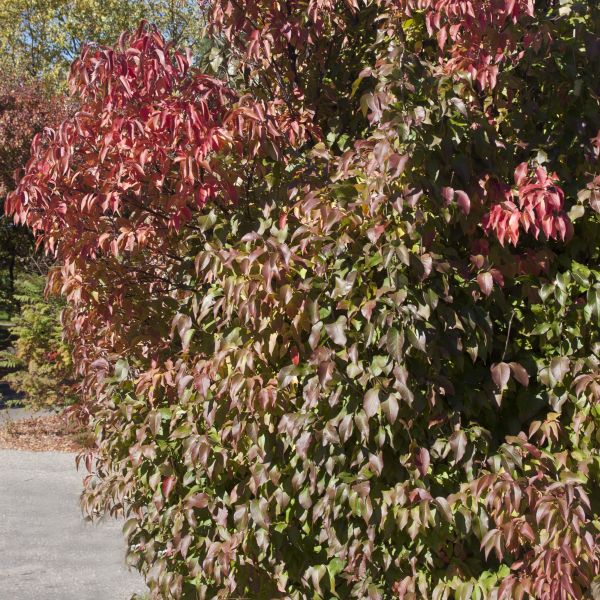Nannyberry Viburnum
Viburnum lentago
Plant Sentry™
Plant Sentry™

Plant Sentry™ Protected
Your order is protected by our compliance system that:
- Prevents restricted plants from shipping to your state
- Ensures plants meet your state's agricultural requirements
- Protects gardens from invasive pests and diseases
Delivery and Shipping
Delivery and Shipping
Delivery and Shipping
Fast, Safe Plant Delivery
Ships in 3-4 business days • Tracking provided • Weather protected
| Under $50 | $9.99 |
| $50 - $99.99 | $14.99 |
| $100 - $149.99 | $16.99 |
| $150 - $198.99 | $24.99 |
| $199+ | FREE |
✓ Zone-specific timing • ✓ Professional packaging • ✓ Health guarantee
Understanding Plant Options
Nature Hills offers plants in two main formats:
- Container Plants: Grown in pots with soil, sized by container volume and plant age
- Bare Root Plants: Dormant plants without soil, sized by height measurements
Container Plant Sizes
Container sizes indicate plant age and growing capacity rather than liquid volume equivalents. Our containers follow industry-standard nursery "trade gallon" specifications, which differ from standard liquid gallon measurements.
Young Plants (6 months to 18 months old)
| Container Size | Actual Volume | Metric Equivalent |
|---|---|---|
| 2" x 2" x 3" | 0.18 - 0.21 dry quarts | 0.20 - 0.23 dry liters |
| 4" Container | 0.31 - 0.87 dry quarts | 0.35 - 0.96 dry liters |
| 4.5" Container | 0.65 dry quarts | 0.72 dry liters |
| 6" Container | 1.4 dry quarts | 1.59 dry liters |
| 1 Quart | 1 dry quart | 1.1 dry liters |
| 5.5" Container | 1.89 dry quarts | 2.08 dry liters |
Established Plants (18 months to 2.5 years old)
| Container Size | Actual Volume | Metric Equivalent |
|---|---|---|
| 2 Quart | 2 dry quarts | 2.2 dry liters |
| #1 Container | 2.26 - 3.73 dry quarts | 2.49 - 4.11 dry liters |
| 5" x 5" x 12" | 3.5 - 4.3 dry quarts | 3.85 - 4.74 dry liters |
Mature Plants (2-4 years old)
| Container Size | Actual Volume | Metric Equivalent |
|---|---|---|
| #2 Container | 1.19 - 1.76 dry gallons | 5.24 - 7.75 dry liters |
| #3 Container | 2.15 - 2.76 dry gallons | 8.14 - 12.16 dry liters |
Large Plants (3-5 years old)
| Container Size | Actual Volume | Metric Equivalent |
|---|---|---|
| #5 Container | 2.92 - 4.62 dry gallons | 12.86 - 20.35 dry liters |
| #6 Container | 5.25 - 6.01 dry gallons | 23.12 - 26.42 dry liters |
| #7 Container | 5.98 - 6.53 dry gallons | 26.34 - 28.76 dry liters |
Bare Root Plants
Bare root plants are sold by height from the root system to the top of the plant. Plants may exceed minimum height requirements.
Common Sizes:
- Trees: 1 foot, 2 feet, 3 feet, 4 feet, 5 feet, 6 feet
- Shrubs & Perennials: 1 foot, 18 inches, 2 feet
Important Notes
Container Volume Specifications
- Trade Gallon Standard: Our containers follow industry-standard "trade gallon" specifications established by the American National Standards Institute (ANSI Z60.1) for nursery stock
- Volume Variations: Actual soil volume may vary due to plant root systems and growing medium settlement
- Age Indicators: Container size primarily indicates plant age and maturity rather than liquid volume equivalents
Growing Conditions
- Plant size can vary based on variety and growing conditions
- Container size helps indicate plant maturity and establishment level
- Larger containers generally mean more established root systems and faster landscape establishment
Seasonal Availability
- Bare root plants are available seasonally when dormant
- Container plants are available throughout the growing season
- Specific varieties may have limited availability in certain sizes
Questions?
For questions about specific plant sizes or availability, please contact our plant experts who can help you choose the right size for your landscape needs.

Plant Sentry™ Protected
Your order is protected by our compliance system that:
- Prevents restricted plants from shipping to your state
- Ensures plants meet your state's agricultural requirements
- Protects gardens from invasive pests and diseases
Plant Profile & Growing Essentials
Cold hardy, Native, Flowering, Fragrant, Fall Color/Interest, Clay Tolerant, Wet Soils, Ornamental Berries/Fruit, and Hedge/Screen
Specifications
Specifications
-
Botanical Name
-
Height
-
Width
-
Growing Zones
-
Sunlight
-
Growth RateModerate
-
Flower Color
-
Leaf Color
-
Fall Color
-
NativeYes
-
Pollinator FriendlyYes
-
Pollinator Required
-
FragrantYes
-
Bloom PeriodLate Spring
Planting & Care Instructions
Planting & Care Instructions
Just what your garden ordered! The Nannyberry Viburnum (Viburnum lentago) is a native master of transformation and beauty. With the Nannyberry Viburnum, you don't have to work hard for its priceless rewards, including shockingly bright fall foliage, cherry-red berries finish ripening to blue-black, and profusions of pure white blooms.
When late spring arrives, you'll want to babysit your Nannyberry and keep your eyes peeled for its impending blooms. You will soon be rewarded with peppy and petite white to soft pink blooms that demonstrate that power in numbers is a great strategy for a striking spring display! The pure white blossoms are darling foamy, fizzy-looking flat clusters that the bees and butterflies adore these sweet flowers that provide them with plenty of options of where to land! You're not the only one that will anticipate the Nannyberry Viburnum's blooms.
The Nannyberry Viburnum features verdant, lively, glossy green foliage on arching branches. This upright shrub makes for a brilliant showing come fall. With deep veins and a slow color change, you will wake up to a different sight every day as the Nannyberry Viburnum transitions into a burning bush with remarkable bi-colored and tri-color leaves in every shade of red, yellow, and orange that you can imagine! Many will even deepen to shades of violet!
Planting and Application:
You and your local birds and squirrels will also appreciate the Nannyberry Viburnum's blue-black berries. If you really want to please your local wildlife, plant a few Nannyberries nearby one another for best pollination and berry production. Create groupings for birds to nest in and wildlife to care for. Block wind and noise and hide prying eyes, while screening off large areas. Growing upwards of 20 feet when left to their own devices, these narrow-growing shrubs can be limbed up into an ornamental tree form by exposing the lower multiple trunks.
The Nannyberry Viburnum is happy to adapt to your landscaping needs. Prune into a single-stem small tree or let it naturally spread its branches into a multi-stem shrub. Use yours as a specimen that will attract wildlife and season after season of interest. When planted along your property line, the Nannyberry Viburnum makes a fantastic informal hedge or screen.
- White Clusters of Fun Flowers
- Pollinator & Bird Friendly
- Vibrant Fall Foliage & Black Berries
- 4 Season Interest & Impressive Size & Height
- Wildlife Plant, Specimen, Winter Interest, Great Screen & Informal Hedge
#ProPlantTips for Care:
Remember to trim your Nannyberry about every three years. Cold-hardy throughout USDA growing zones 2-8, these adaptable shrubs are happy in almost any kind of well-drained soil with moderate fertility with average moisture. Mulch the site well.
Wait to prune until after those amazing flowers are finished in spring. It's rare to need to tip prune, but you can shorten up the ends of branches right after flowering if you'd like. You can also skip tip pruning and renewal prune only if you wish to have fruit for birds. Renewal prune removes the largest, thickest stems from the ground every few years. This will rejuvenate your shrub. Leave the young stems in place, which will flower nicely for you next spring.
- Full Sun & Partial Shade
- Adaptable to Most Well-Drained Soil
- Easy Care - Prefers Moist Soil Types
- Deer Tend to Leave This Plant Alone - Juglone Tolerant
- Self-Pollinating, But Plant More Than One Trilobum for Best Berry Production
Something to enjoy every season, the easy care Nannyberry Viburnum won't stay in our nursery for long. They are in high demand and ready to please season after season! Nature Hills Order several to experience the full effect!
Frequently Asked Questions
Does the Nannyberry Viburnum Produce Fruit?
The Nannyberry will produce blue-black in the autumn with a pollinator species nearby.
Does Nannyberry Viburnum Spread?
The Nannyberry Viburnum can occasionally form suckers at the base of the plant, but these can be removed when pruning after flowering or mowed down if you do not wish it to spread. Not invasive, these plants will politely form tidy thickets over time when allowed.
Do Viburnum Shrubs Lose Their Leaves in Winter?
Nannyberry is a deciduous Viburnum and will drop its leaves in the fall.
How tall is the Nannyberry Viburnum?
The mature height of a Nannyberry Viburnum in optimal conditions is around 18-20 feet tall and 6-10 feet wide.
Will Nannyberry Viburnum grow in shade?
The Viburnum can grow in full sun and partial shade. For the strongest growth, best color, and flowering, provide at least 5-6 hours of sun a day. These will not do well in full shade.
How do you care for a Viburnum Bush?
These are incredibly easy-care shrubs that need full sun or partial shade in a well-drained, moderately moist environment. Well-drained enriched soil and mulched beds are preferred.
What Shipping Options Do You Offer?
NatureHills.com works closely with our growers and nursery professionals to ensure we ship when it is most appropriate for your area. Our goal is to deliver the hardiest plants by avoiding extreme high and low temperatures. Check out our shipping schedule for more information and to learn our wills and won'ts when it comes to shipping plants. Find your Viburnum for sale here at NatureHills.com!











